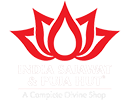Navratri Vrat
Navratri Vrat
Navratri Vrat is an important fasting ritual observed by Hindus during Navratri or ‘Navadurga Parva’, which happens to be one of the most auspicious festivals in Indian culture. The festival which honours and celebrates the victory of Goddess Durga after defeating the demon Mahisasura, is celebrated twice a year, and both times with equal joy and enthusiasm. The celebrations that take place during spring (March – April) are known as ‘Vasant Navratri’ and the one that takes place during fall (September – October) are known as ‘Sharadiya Navratri’.
Scientific and Historic Significance
The start of fall and the start of autumn, both the two seasonal changes are said to cause imbalances in our bodies. Hence, it is believed that fasting or eating clean during Navratri, will cleanse our body, improve its metabolism, and help it in adapting to these major seasonal changes. This process will ultimately purify and make our mind stronger, since our body is connected to the mind, and by purifying the body, we purify and calm the mind.
It is also believed that Goddess Durga once explained the process of fasting to one of her devotees, and since then, all her devotees have been observing Navratri Vrat to achieve prosperity and receive ‘moksha’.
When and how to observe a Navratri Vrat?
Sharadiya Navratri Vrat in 2021 begins on October 7 and ends on October 14, while Vasant Navratri Vrat for 2021 begins on April 13 and ends on April 21. The Navratri fasting is observed by both men and women and varies from person to person. Some devotees observe the Vrat on all nine days of Navratri, while some observe the fast on either the first 2 days of Navratri or, the last 2 days of Navratri.
- During the period of Navratri Vrat, people first take a ritual bath in the morning and drink plain water.
- Most of the people only eat one meal a day, which is usually a traditional Navratri meal, and fast for the rest of the day.
- Other people only eat fruits and drink milk during all nine days. Non-vegetarian meals and fried foods are strictly avoided.
- Some people also observe the Vrat by avoiding grains and replacing regular salt with rock salt, in their Navratri meals.
- Onions and garlics are avoided by some, as well.
- Smoking or consumption of alcohol is strictly avoided as well.
- People are also advised to drink Amla juice, watermelon juice and coconut water, in case they only consider eating fruits or drinking juices during their Vrat.
Breaking the Vrat
People should avoid overeating once they break their fast in the evening or night. Simple and light meals which are easily digestible, should be consumed. This will help the body maintain the positive effects from the fasting and continue to support the cleansing process.




